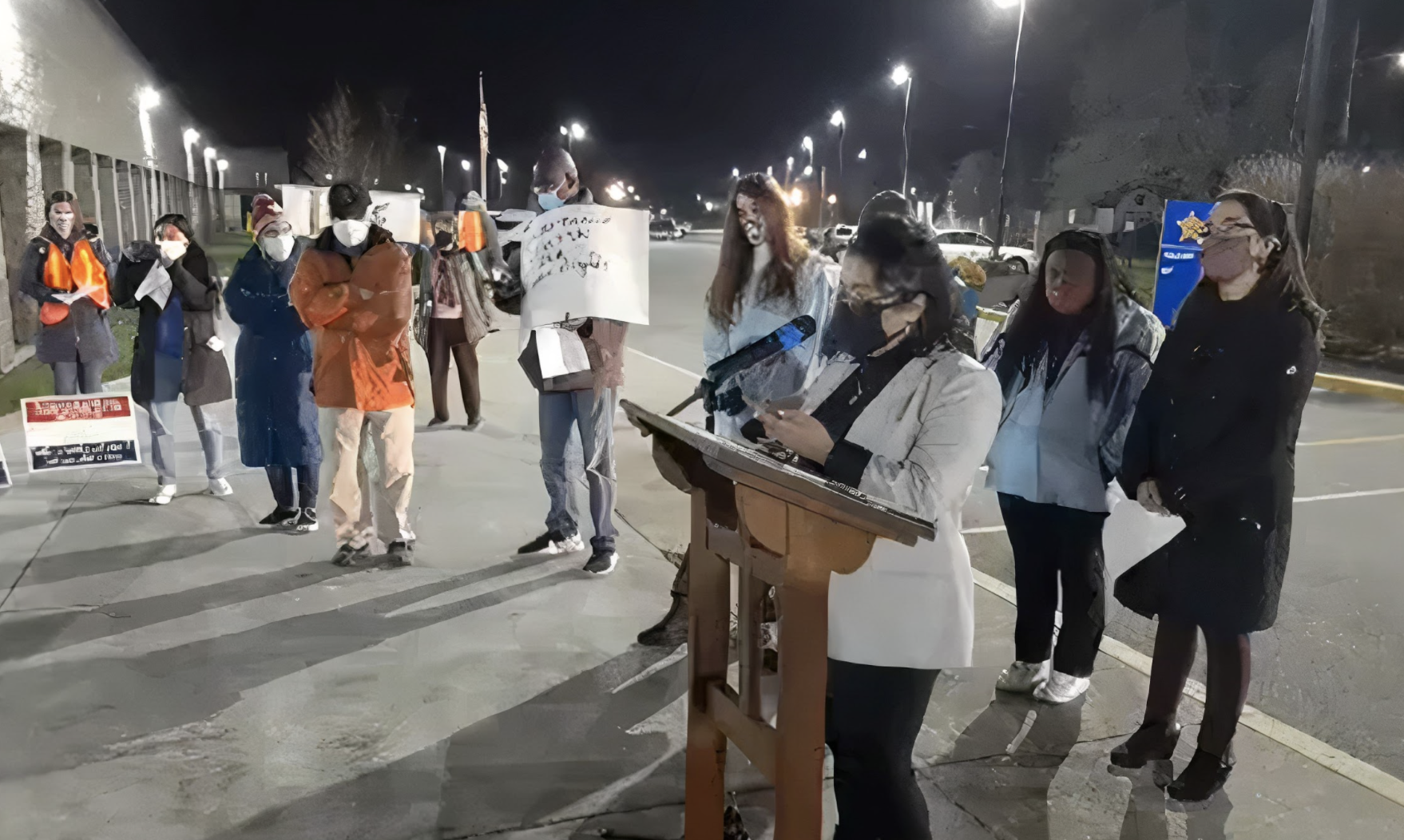For Immediate Release: May 28, 2021
PRESS CALL: FRIDAY MAY 28, 10:30AM
The End of an Era: Butler County Will No Longer Cage Immigrants in “Civil” Detention
#ICEOutOfButler
Hamilton, OH – The Butler County Jail is getting out of the business of “civil” immigration detention, and the community is celebrating. On Friday, May 28, at 10:30am, advocates and lawyers will analyze this victory and lay out their expectations for what’s next.
This event, which is open to the press and public, will feature recorded testimonies from people who spent time in that jail, talking about their experiences.
WHO: Danya Contractor, Ohio Immigrant Visitation; Anna Nathanson, Norris Law Group; Brian Hoffman, OCSILiO: The Ohio Center for Strategic Immigration Litigation & Outreach; Sandra Ramirez, IJPC’s Youth Educating Society; Lynn Tramonte, Ohio Immigrant Alliance (moderator); people who were once detained in Butler County Jail
WHAT: Zoom meeting/press call with reporters
WHEN: Friday, May 28, 10:30am ET
HOW TO JOIN: Click on this link http://bit.ly/ICEOutOfButlerPress or use the info below:
Meeting ID: 974 9517 2628
Passcode: 339073
One tap mobile
+13017158592,,97495172628#,,,,*339073# US (Washington DC)
+13126266799,,97495172628#,,,,*339073# US (Chicago)
Follow the Ohio Immigrant Alliance on Facebook and Twitter @tramontela
See backgrounder (below)
###
BACKGROUND: IMMIGRATION DETENTION IN OHIO
For years, county jails fed off of a federal contract to detain immigrants for U.S. Immigration and Customs Enforcement (ICE), while they fight their deportation cases. In exchange for a daily, per person fee, the jailers agreed to provide a certain standard of care, like edible food and access to doctors.
In at least two Ohio jails with ICE contracts, however, that standard of care existed only on paper, not in real life. When the Morrow County Jail failed to follow basic infectious disease protocols, the entire jail became infected with COVID-19. An ACLU of Ohio lawsuit and community pushback forced ICE to stop using this facility to detain immigrants.
Years of inhumane and racist treatment of immigrants at the Butler County Jail, including violent assaults, finally caught up with Butler County Sheriff Richard Jones. Two brave immigrants, Bayong Brown Bayong and Ahmed Adem, reported beatings at the hands of Butler corrections officers and filed a civil rights lawsuit with the Norris Law Group and John Camillus. Dozens more people reported incidents, including gross medical neglect of cancer patients, in a civil rights complaint filed with the Department of Homeland Security Office of Civil Rights and Civil Liberties.
Now, Sheriff Jones’ ICE contract is being severed, because he doesn’t want to have to offer this basic standard of care. This news follows other ICE contract terminations with the C. Carlos Carreiro Immigration Detention Center in Massachusetts and the Irwin County Detention Center in Georgia.
“Allow me to state one foundational principle,” wrote DHS Secretary Mayorkas in a memo about those terminations. “We will not tolerate the mistreatment of individuals in civil immigration detention or substandard conditions of detention.”
This statement stands in stark contrast to the values of the previous administration. But ending abuse of immigrants in ICE jail is not enough. Ending the contract at Butler is not enough. The people detained there–and in other U.S. immigration jails–need to be released. As Peter Markowitz writes in a groundbreaking paper about a new system for immigration enforcement that is logical and humane:
Virtually every other federal agency in the administrative state has found a way to enforce its civil administrative scheme without putting people in cages. There is no reason why deportation proceedings, or even the deportation process itself, must begin with handcuffs.
In place of inhumane, costly, and unnecessary detention, the federal government can ensure appearance and compliance with court orders by providing counsel and support for those who need it, through proven community-based management programs, as well as incentives for compliance and reentry services for those who ultimately face deportation.
A report from the Detention Watch Network (DWN) lays out specific ways the Biden administration can further reduce immigration detention. Ending contracts is critical. As NPR reports, the U.S. taxpayers are already spending over $1 million per day on detention space that is not being used. DWN recommends that the cost savings in ending detention be used to repurpose facilities into spaces that actually benefit the community, and support alternative economic development in places that turned to incarceration for job creation.

